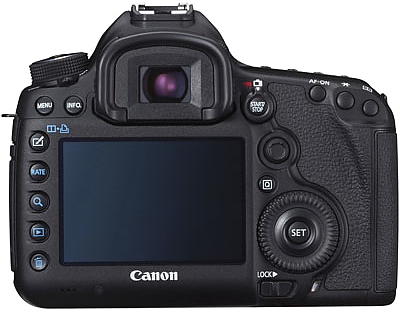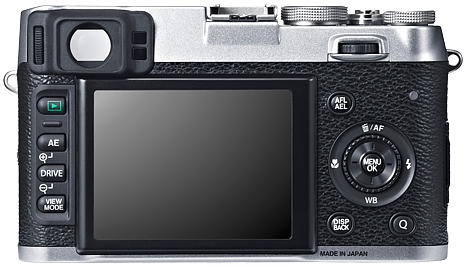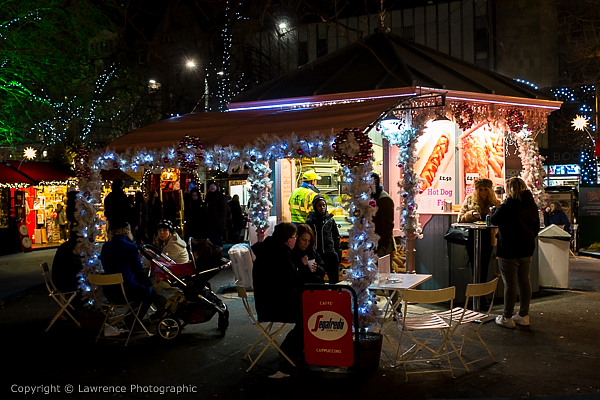I read on the internet that we don't require
the optical viewfinder anymore
thanks to the appearance of the latest generation of electronic 'live
view' viewfinders appearing in 'mirrorless'
cameras.
The DSLR Camera Optical Viewfinder
I have stated it many times and I will
state it again, there is nothing to
beat the view you get when looking through a professional DSLR optical viewfinder and
down through
 the
glass of a large optics lens, even in very low light. The clarity and
the ability to see the minutest detail, even the different levels of
light in every part of the scene is a hard act to follow.
the
glass of a large optics lens, even in very low light. The clarity and
the ability to see the minutest detail, even the different levels of
light in every part of the scene is a hard act to follow.
Once a photographer uses a DSLR camera for a period of time it becomes
second nature to set it up for a shoot. Reliance on the
aperture priority mode and the camera's exposure meter assists the manual
settings of the camera. The photographer sets up the ISO rating and aperture in relation to the required depth of field
and shutter settings pertaining to his vision of any given lighting in a scene and the desired
effect he wishes to create in the captured image.
Whether you use an optical viewfinder or an electronic viewfinder the
photographer is forced to place a heavy reliance on the accuracy of the
camera's exposure metering systems. The camera in aperture priority mode
and using evaluative (matrix) metering reads reflective light
from a scene and calculates the shutter speed in relation to the ISO
rating and the aperture set by the photographer. It also produces a
histogram of the reading for the display screen, either in the
viewfinder and/or the LCD screen. For a large proportion of even
balanced light scenes this will prove relatively accurate but in scenes
where the light is uneven and where there is incident light, the meter
will struggle to accurately determine the parameters. The camera
exposure meter can cause the settings to overexpose the highlights and
the photographer when attempting to adjust the exposure compensation can
underexpose the image. The camera's exposure
spot meter in conjunction with the
camera's dynamic range capability can assist to provide more evenly
balanced parameters but the spot meter still cannot compensate for
incident light. Many professional photographers will use an external
'hand held' light meter
and
manually setup the camera
as
the
light meter
can read incident lighting as well as spot reading and knows the dynamic
range calibrations of the camera to quickly work out the parameters for
you.
The professional DSLR's metering system and optical
viewfinder come into their own for fast sports and wildlife photography
where the camera may be panned by the photographer and the viewfinder
maintains 'eye like' vision on the subject whilst the camera's rapid frame capture
and the minimum
of shutter lag assists to maintain an uninterrupted view.
Alongside the optical viewfinder is the 'live view' LCD screen which is
especially useful for tripod work, fully manual setup of the camera and
the manual 'fine focusing' of a given subject which makes landscape
and macro photography most enjoyable.
_________________________________________
The 'Leica M Style Frame' Optical Viewfinder
You will find the Leica M style optical viewfinder now in the
 Fujifilm
X100s compact camera and the Fujifilm X-Pro 1 compact system camera.
These optical viewfinders are ideal for street photography with a 'hand
held' camera because they display a frame of the 'digital sensor's view' within
a larger scene so the photographer can see what is coming into that
frame.
Fujifilm
X100s compact camera and the Fujifilm X-Pro 1 compact system camera.
These optical viewfinders are ideal for street photography with a 'hand
held' camera because they display a frame of the 'digital sensor's view' within
a larger scene so the photographer can see what is coming into that
frame.
The viewfinder is at the left side of the camera so the photographer places his right eye to it and
with his left eye open he can take in more of the action of subjects moving within the
street scene outside and coming into the frame within the camera.
Just like with a DSLR camera the
photographer uses his brain and the camera exposure meter to set up the camera  and
will use a variety of focusing
methods such as manual, autofocus and
hyperfocal to nail the shot.
and
will use a variety of focusing
methods such as manual, autofocus and
hyperfocal to nail the shot.
Some street photographers don't even use the camera metering, they just
know what the lighting conditions are and manually setup the camera.
Others use an external light meter from their pocket to snatch a
light reading to confirm, before proceeding with manual setup.
The street photographer is very much the
purist because he will invariably
be taking multiple 'decisive moment' shots with very little time to
check the results on the LCD screen. It may sound hit or miss for
keepers but to the 'professional' street photographer it is all second
nature and knowing how to setup the camera is all important.
Later after a shooting session it is nice to relax
in a local bar, quietly having a meal and a pint
whilst checking your images on the camera LCD screen. There is a time
and a place for a good woman but you don't want her cluttering up the
experience unless of course you are lucky and she likes street
photography as well.
More on the
Fujifilm X100s Camera and
Street Photography.
_________________________________________
The Electronic Viewfinder
Of course it's fantastic, especially the electronic viewfinder in my Fujifilm X100s compact camera which
reflects not only the focus and depth of field it also reflects any
exposure changes.
When I am not using the optical one in the X100s for street work,
 I
can switch to the electronic one for general photography. I often use it
to pre-set the manual controls of my camera prior to switching to the
optical viewfinder for street photography and this is particularly
useful for night shooting under street lighting, although in fairness I
could just use the optical one, run off a few test shots and check my
final settings in the LCD screen.
I
can switch to the electronic one for general photography. I often use it
to pre-set the manual controls of my camera prior to switching to the
optical viewfinder for street photography and this is particularly
useful for night shooting under street lighting, although in fairness I
could just use the optical one, run off a few test shots and check my
final settings in the LCD screen.
The
Fujifilm X100s camera's electronic viewfinder can be used quite
easily in all normal conditions. I have used it at night under street
lights where the autofocus of the camera worked flawlessly and the view
through the electronic viewfinder proved superb without loss of clarity or
lighting in the viewed scene. However in extreme darkness with the
absolute minimum of light the scene through the viewfinder tears, the
dynamic range is minimal and there is slightly lower vision and dynamic
range than you would see through an optical viewfinder.
Whether you use an optical viewfinder or an electronic viewfinder the
photographer is forced to place a heavy reliance on the accuracy of the
camera's exposure metering systems. The camera in aperture priority mode
and using evaluative (matrix) metering reads reflective light
from a scene and calculates the shutter speed in relation to the ISO
rating and the aperture set by the photographer. It also produces a
histogram of the reading for the display screen, either in the
viewfinder and/or the LCD screen. For a large proportion of even
balanced light scenes this will prove relatively accurate but in scenes
where the light is uneven and where there is incident light, the meter
will struggle to accurately determine the parameters. The camera
exposure meter can cause the settings to overexpose the highlights and
the photographer when attempting to adjust the exposure compensation can
underexpose the image. The camera's exposure
spot meter in conjunction with the
camera's dynamic range capability can assist to provide more evenly
balanced parameters but the spot meter still cannot compensate for
incident light. Many professional photographers will use an external
'hand held' light meter
and
manually setup the camera
as
the
light meter
can read incident lighting
as well as spot reading and
knows the dynamic range
calibrations of the camera
to quickly work out the
parameters
for you.
Using the Fujifilm X100s camera, this night shot had to be manually
adjusted for exposure by -1 stop

Fujifilm X100s - Low Light - Electronic Viewfinder + Exposure Lock -
When setting up the exposure of a scene, even using the exposure
compensation dial, the scene through the EVF will reflect the changes.
Then using the AE-L button
(toggle on/off) you can lock the exposure
(the AE-L button indicator 'E over L' appears in the viewfinder between
the locked aperture and locked shutter settings)
BUT then the electronic viewfinder reverts to a normal scene view
which is very bright. With the AE-L locked you cannot change the
settings, even using the exposure +/- adjustment wheel and
ONLY when you half/press hold the shutter button to lock the
autofocus the exposure of the
scene changes in the viewfinder to match the AE-L exposure locked
settings and you press the shutter button home for the shot.
I think this is great, the one downside with my Panasonic or my Sony
camera EVFs is when you adjust the exposure for very uneven light
(e.g. bright sky and very dark foreground) the viewfinder invariably
cannot clearly display all the scene - not so with the X100s, it behaves
very optically in AE-L exposure lock mode until you actually half/press
hold the shutter button to autofocus on the primary subject and then
re-align and fully press down to take the shot. This is my favourite
method of shooting and especially useful for isolating subjects from the
background using a f2 aperture with a thin depth of field.